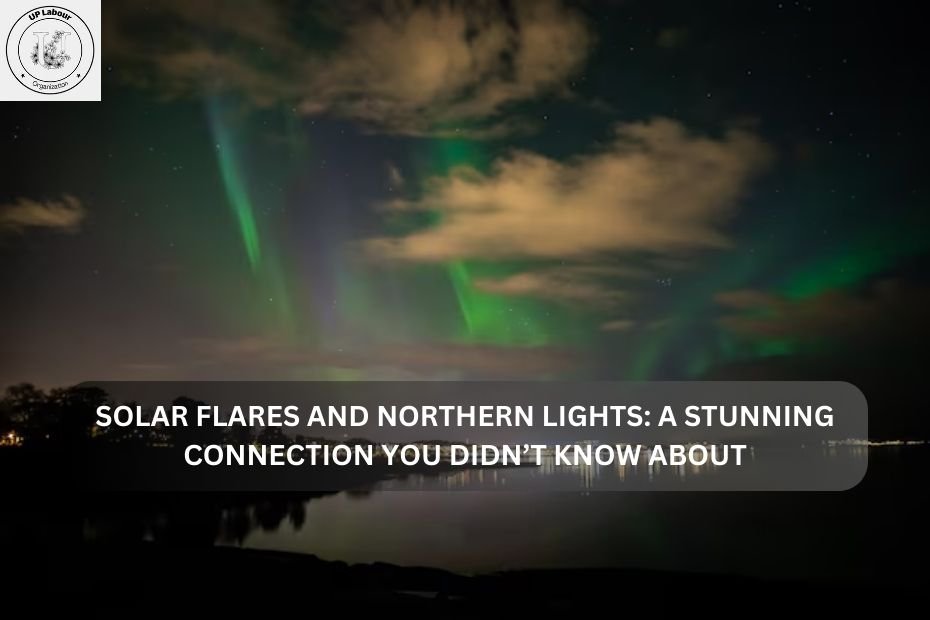Have you ever gazed up at the night sky, mesmerized by the shimmering colors of the Northern Lights? If so, you’re not alone. These captivating natural phenomena have enchanted people for centuries. But did you know there’s a fascinating connection between solar flares and the Northern Lights? In this article, we’ll explore how these two cosmic events are linked, why they occur, and what makes them so mesmerizing.
What Are Solar Flares?
Let’s start with the basics. Solar flares are powerful bursts of radiation coming from the sun’s surface. These flares occur when the sun’s magnetic field lines become tangled and snap, releasing vast amounts of energy. Imagine a rubber band stretched too far suddenly snapping back into place. This release of energy can produce a brilliant flash of light, sometimes brighter than the sun itself.
Solar flares can vary in size and intensity. The strongest ones are called X-class flares, while medium-strength flares are classified as M-class and weaker ones as C-class. These flares can impact Earth in several ways, most notably through their interaction with our planet’s magnetic field and atmosphere.
What Are the Northern Lights?
Now, let’s talk about the Northern Lights, also known as the Aurora Borealis. These beautiful displays of light occur primarily in the polar regions. They create stunning ribbons of color—often green, pink, red, or violet—dancing across the night sky. The Southern Hemisphere has its counterpart called the Aurora Australis.
The Northern Lights are caused by charged particles from the sun colliding with gases in Earth’s atmosphere. When solar wind—streaming from the sun—carries these charged particles toward Earth, they encounter our magnetic field. This magnetic field directs the particles toward the polar regions, where they interact with oxygen and nitrogen in the atmosphere, resulting in the vivid colors we see.
The Connection Between Solar Flares and Northern Lights
So, how exactly are solar flares connected to the Northern Lights? The key lies in the solar wind. When a solar flare occurs, it can send a wave of charged particles hurtling through space at incredibly high speeds. This surge of particles increases the intensity of the solar wind and can lead to more pronounced auroras.
Here’s how the process works:
- Solar Activity: When the sun experiences a solar flare, it releases a massive amount of energy and charged particles into space. This release is often accompanied by coronal mass ejections (CMEs), which are huge bursts of solar wind and magnetic fields rising above the solar corona or being released into space.
- Impact on Earth: As these charged particles travel toward Earth, they can reach our planet in as little as 15 minutes after a solar flare. When they collide with Earth’s magnetic field, it can cause disturbances known as geomagnetic storms.
- Auroras: These geomagnetic storms create the conditions necessary for the Northern Lights to occur. The increased activity can intensify the auroras, making them more vibrant and visible even in areas that typically don’t see them.
The Role of the Solar Cycle
To fully appreciate the connection between solar flares and the Northern Lights, it’s essential to understand the solar cycle. The sun goes through an approximately 11-year cycle of solar activity, transitioning from solar minimum (when activity is low) to solar maximum (when activity is high).
During the solar maximum, the number of solar flares and CMEs increases significantly. As a result, the Northern Lights become more frequent and intense during this time. So, if you’re hoping to witness a spectacular display, keep an eye on the solar cycle. The next solar maximum is expected to peak around 2025, promising exciting auroral displays.
Factors That Affect Visibility
While solar flares can enhance the Northern Lights, several factors affect visibility. Let’s take a closer look at these factors to help you maximize your chances of witnessing this incredible spectacle:
- Geographic Location: The best places to view the Northern Lights are near the magnetic poles. Regions like Alaska, Canada, and northern Scandinavia are ideal for aurora watching. However, during periods of high solar activity, the lights can sometimes be seen much farther south.
- Weather Conditions: Clear, dark skies are crucial for viewing the Northern Lights. Cloud cover or light pollution can obscure the display. Check the weather forecast before heading out, and aim for areas away from city lights.
- Timing: The Northern Lights are most visible during the winter months when nights are longer. The best time to see them is typically between September and April. During these months, plan to be outside late at night or early in the morning when auroral activity is often at its peak.
- Solar Activity: Stay informed about solar activity. Websites and apps provide real-time data on solar flares and auroral forecasts. When you see a significant solar flare reported, it’s a good time to head outside to look for the Northern Lights.
Cultural Significance of the Northern Lights
The Northern Lights have not only captivated scientists but have also inspired countless myths, legends, and artistic expressions. Various cultures have their interpretations of this natural phenomenon:
- Norse Mythology: In Norse mythology, the Northern Lights were seen as the reflections of the shields and armor of Valkyries, the warrior maidens who guided fallen heroes to Valhalla.
- Native American Beliefs: Many Native American tribes regarded the Northern Lights as spiritual manifestations. For instance, the Cree people believed they were the spirits of their ancestors dancing in the sky.
- Artistic Inspiration: The beauty of the Northern Lights has inspired countless artists, photographers, and writers. They capture the essence of these stunning displays in various forms of art, highlighting the profound impact the auroras have on human creativity.
Witnessing the Northern Lights
Experiencing the Northern Lights in person is an unforgettable adventure. Here are some tips for making the most of your aurora-watching experience:
- Plan Your Trip: Research the best locations and times to see the Northern Lights. Consider joining guided tours that offer expert insights and optimal viewing locations.
- Dress Warmly: Northern Lights viewing often requires spending long hours outside in cold temperatures. Dress in layers, wear insulated clothing, and bring blankets or sleeping bags for added warmth.
- Bring the Right Gear: If you plan to photograph the Northern Lights, bring a good camera, a tripod, and wide-angle lenses. Don’t forget extra batteries, as cold temperatures can drain them quickly.
- Stay Patient: The Northern Lights can be unpredictable. Be prepared to wait, and enjoy the beauty of the night sky while you do.
- Respect Nature: When viewing the Northern Lights, be mindful of your surroundings. Follow local guidelines, minimize light pollution, and leave no trace behind.
Conclusion
The connection between solar flares and the Northern Lights is a beautiful example of how our universe interacts in mesmerizing ways. Solar flares not only influence the sun’s activity but also create the stunning auroras that light up our night skies.
Whether you’re a seasoned aurora chaser or just beginning to explore the magic of the Northern Lights, understanding this connection adds another layer of appreciation to the experience. As we continue to study and explore these phenomena, we gain deeper insights into the wonders of our solar system.
So, the next time you find yourself under a blanket of stars, keep an eye out for those dancing lights in the sky. You might just witness the breathtaking beauty of the Northern Lights, a stunning reminder of the universe’s incredible connections.

